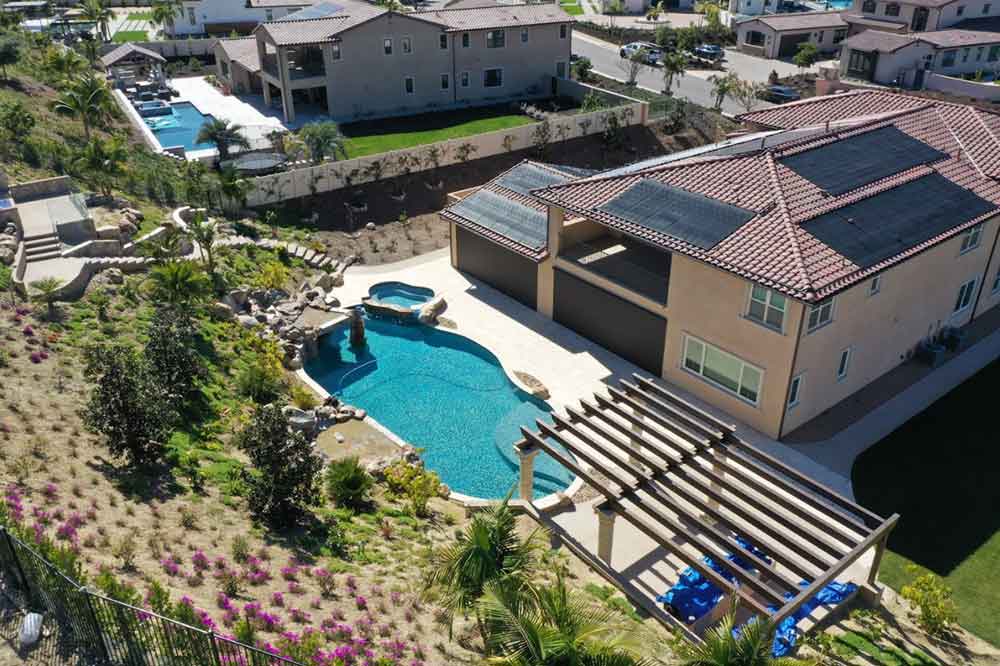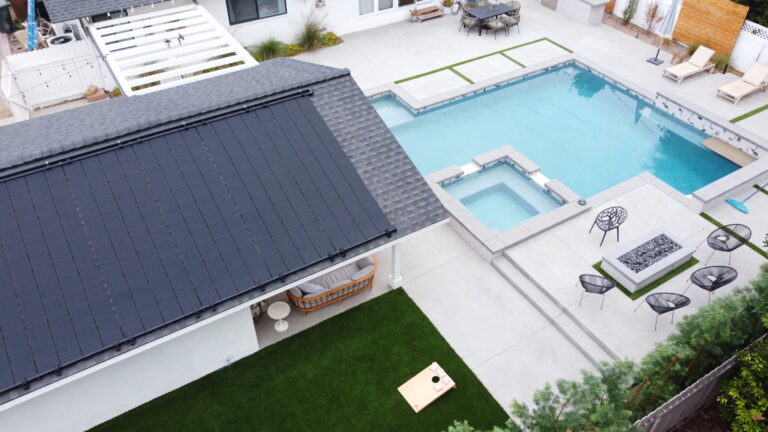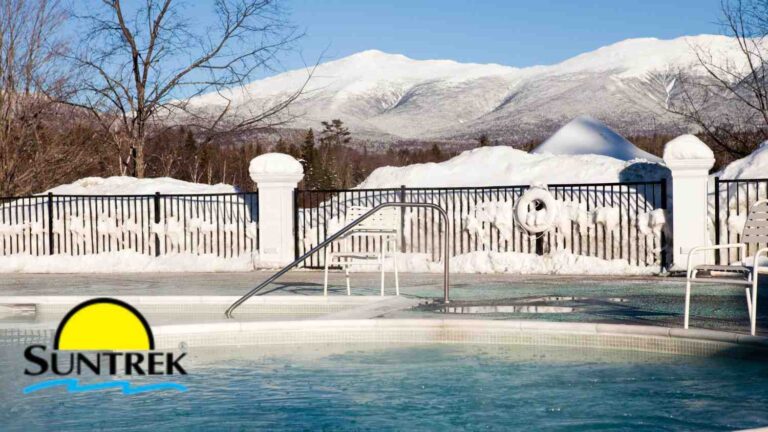
If you’re considering heating your pool, chances are you’ve heard about the three main options: solar thermal pool heating, gas heaters, and heat pumps. Each system has its strengths—and its tradeoffs. It ultimately comes down to UPFRONT COST, OPERATING COST, and the TIME IT TAKES TO HEAT So which is right for you? Let’s break it down.
The Three Heating Options
- Solar Thermal Pool Heating
Solar pool heating uses panels—usually mounted on your roof—that circulate pool water through black polypropylene or EPDM collectors. The sun does the work, and once installed, the energy is virtually free.
- Pros: Lowest long-term cost, long lifespan (10–20 years), spontaneous pool usage, eco-friendly.
- Cons: Relies on sunny weather; slower to warm up initially
- Gas Pool Heaters
Gas heaters burn natural gas or propane to heat your pool water quickly. With outputs of 400,000 BTUs, they can heat a body of water the quickest.
- Pros: Fastest heating option, reliable in any climate, critical for spontaneous spas use.
- Cons: High fuel cost; shorter lifespan (7–10 years); higher emissions. Least efficient
- Heat Pump Pool Heaters
Heat pumps extract heat from the air and transfer it into your pool water. They’re very efficient, but their performance depends on the air temperature and electricity rates. Under perfect conditions, they may only have a heat output of up 150,000 BTU’s
- Pros: Extremely efficient (COP ~5–6, or 500–600% efficiency), steady and quiet operation, eco-friendly.
- Cons: Slower to heat than gas; less effective in cool or dry climates; upfront cost is high. Operating cost is HIGHEST in areas with high electricity rates. Pump run times are also prolonged due to longer heater run times.
How do they each perform heating a 15’x30’ 15,000 gallon pool?
Here’s an example of how long it takes to raise water temperature by 10°F in a medium-size pool (~15,000 gallons):
| Heater Type | Approx. Output | Time to Raise 10°F | Notes |
| Gas Heater | 400,000 BTU/h | ~4 hours | Works in any weather, best for spas or on-demand. |
| Heat Pump | 120,000 BTU/h | ~12 hours | Efficiency drops in cool or dry air. |
| Solar Thermal | Varies with sun & panel size | 2–5 sunny days | Once warm, maintains temp very cost-effectively. |
So, Which is Best?
- For long-term, everyday heating:
Solar thermal pool heating is the clear winner. It’s the most cost-effective and sustainable way to keep your pool warm for an extended period. - For backup or spa heating:
If electricity is expensive (like in California), gas is the best supplementary option. It heats fast and is the only practical solution for spas. - For steady heating in the right climate:
A heat pump makes sense where electricity is affordable and humidity is high (e.g., Florida, Texas). In those regions, it can compete closely with solar in efficiency.
Final Word
If you want your pool to stay warm without breaking the bank, solar thermal is the way to go. Pair it with a gas heater for on-demand heat (especially for spas), and you’ve got the perfect balance of efficiency, comfort, and flexibility.




